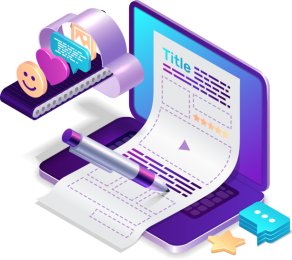
In the realm of web development, the Model-View-Controller (MVC) architectural pattern stands as one of the most influential paradigms. It provides a structured approach to designing web applications, promoting modularity, scalability, and maintainability. In this guide, we'll delve into the MVC framework in PHP, exploring its key components, principles, and benefits.
Understanding MVC Architecture:
MVC separates an application into three interconnected components, each with its distinct responsibility:
Model: The model represents the application's data and business logic. It encapsulates the data structure, database interactions, and validation rules. In MVC, the model is responsible for managing data persistence and state.
View: The view is responsible for presenting data to the user in a visually appealing format. It encompasses the HTML markup, CSS styling, and client-side scripting necessary to render the user interface. Views are typically passive components that receive data from the controller and display it to the user.
Controller: The controller acts as an intermediary between the model and the view. It processes user requests, invokes the appropriate methods in the model to retrieve or manipulate data, and selects the appropriate view to render the response. Controllers handle user input, orchestrate business logic, and coordinate the flow of data between the model and the view.
Implementing MVC Framework in PHP:
PHP offers a robust foundation for building MVC-based web applications. Let's explore how to implement each component of the MVC pattern in PHP:
Model:
In PHP, models typically represent data entities and interact with the database. They encapsulate data access logic and provide methods for querying, inserting, updating, and deleting records. Here's a simplified example of a model class:
class User {
public function getUserById($userId) {
}
public function updateUser($userId, $userData) {
}
}
View:
Views in PHP are responsible for generating HTML markup to render the user interface. They receive data from the controller and use it to dynamically generate the content displayed to the user. Views can include HTML templates with embedded PHP code or utilize template engines for better separation of concerns. Here's a basic example of a view:
<!DOCTYPE html>
<html>
<head> <title>User Profile</title>
</head>
<body> <h1>Welcome, <?php echo $user['username']; ?>!</h1> <p>Email: <?php echo $user['email']; ?></p>
</body>
</html>
Controller:
Controllers in PHP handle user requests, process input data, and interact with models to retrieve or manipulate data. They select the appropriate view to render the response and pass data to the view for presentation. Controllers are responsible for defining application routes and managing the overall application flow. Here's an example of a controller method:
class UserController {
public function profile($userId) {
$userModel = new User();
$userData = $userModel->getUserById($userId);
include 'views/profile.php';
}
}
Benefits of MVC Framework in PHP:
Separation of Concerns: MVC promotes a clear separation of concerns, making it easier to manage code complexity and maintainability.
Modularity: Components in MVC are modular and reusable, allowing developers to build and extend applications more efficiently.
Testability: With distinct components, it becomes easier to write unit tests for models, views, and controllers independently.
Scalability: MVC facilitates the scalability of web applications by enabling developers to add new features or modify existing ones without impacting other parts of the system.
Conclusion:
The MVC framework in PHP provides a robust architectural pattern for building scalable and maintainable web applications. By separating concerns into models, views, and controllers, developers can organize code more effectively, enhance testability, and streamline the development process. Whether you're building a simple blog or a complex enterprise application, leveraging the MVC pattern in PHP can significantly improve the quality and maintainability of your codebase.





 g10dra
g10dra mike
mike crocodile2u
crocodile2u harikrishnanr
harikrishnanr calevans
calevans christiemarie
christiemarie MindNovae
MindNovae dmamontov
dmamontov tanja
tanja
